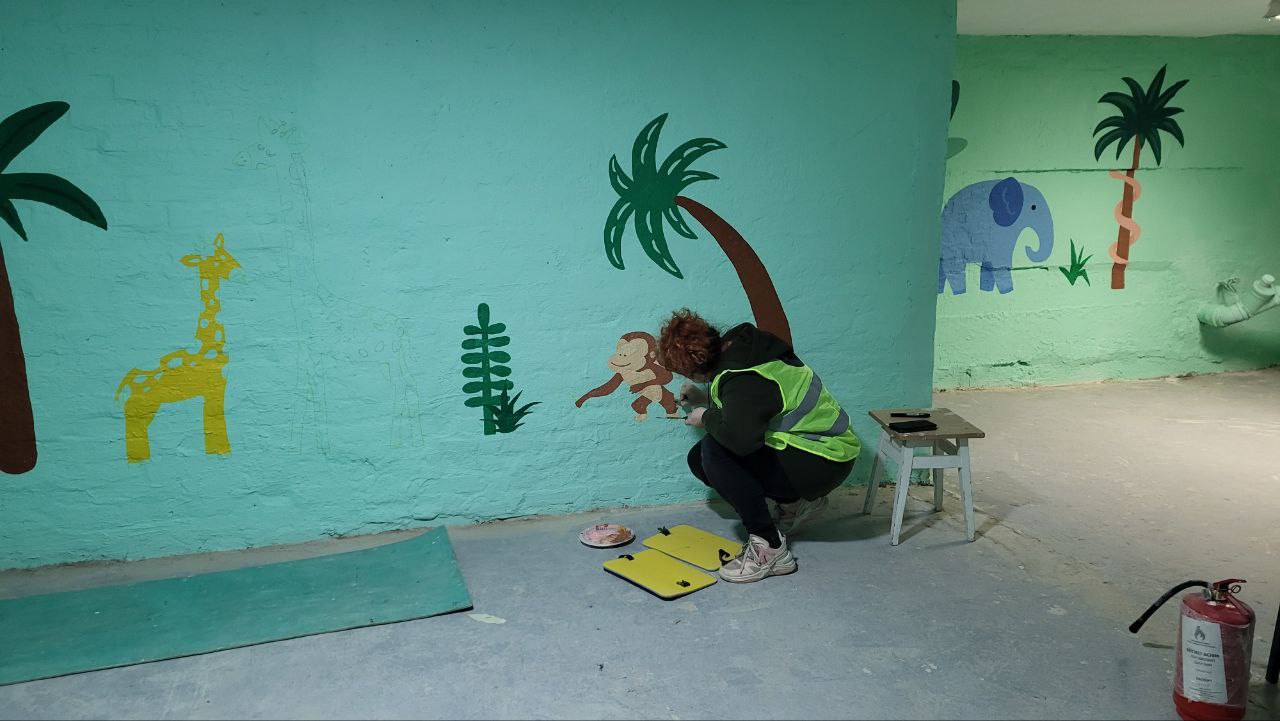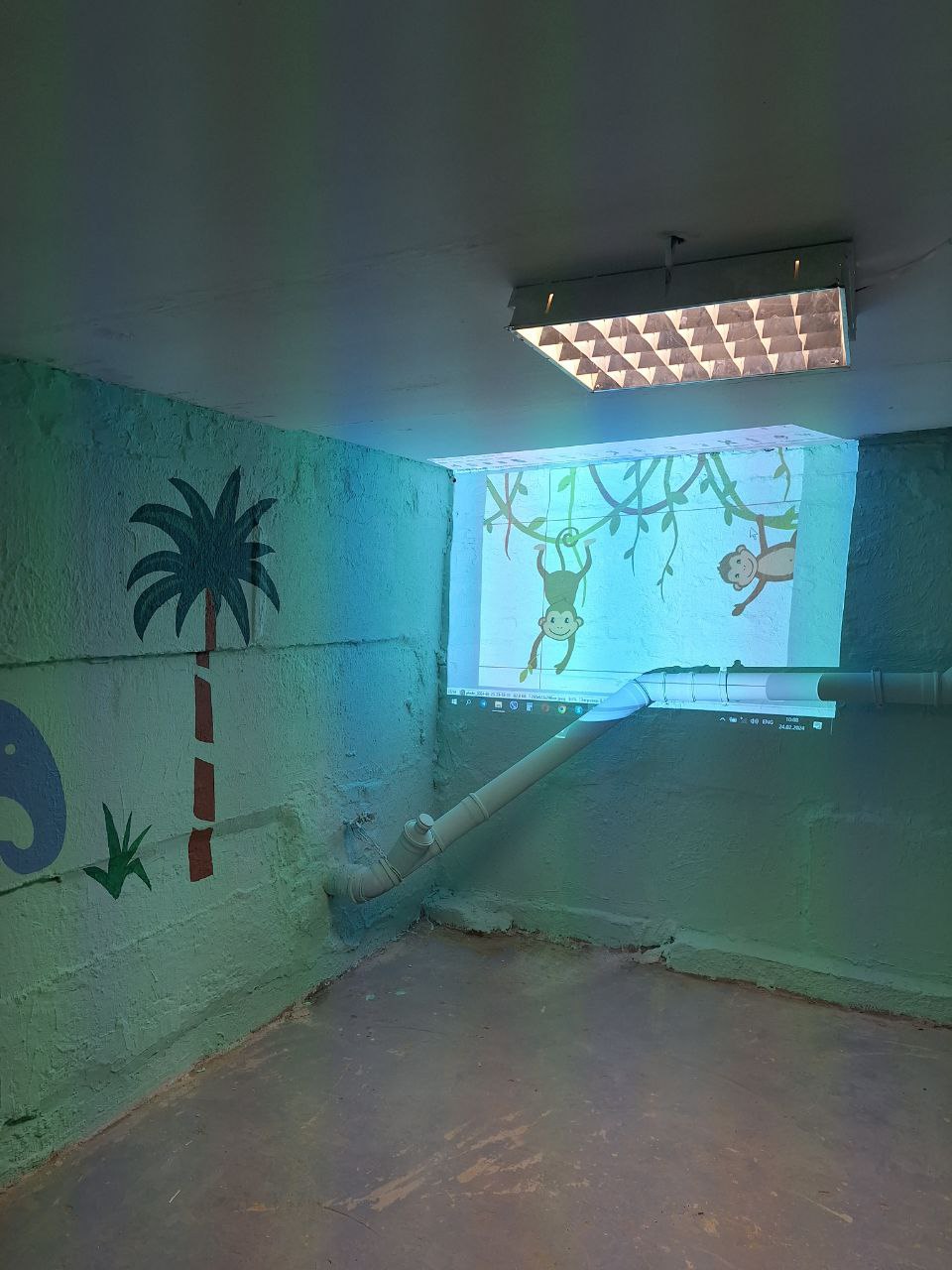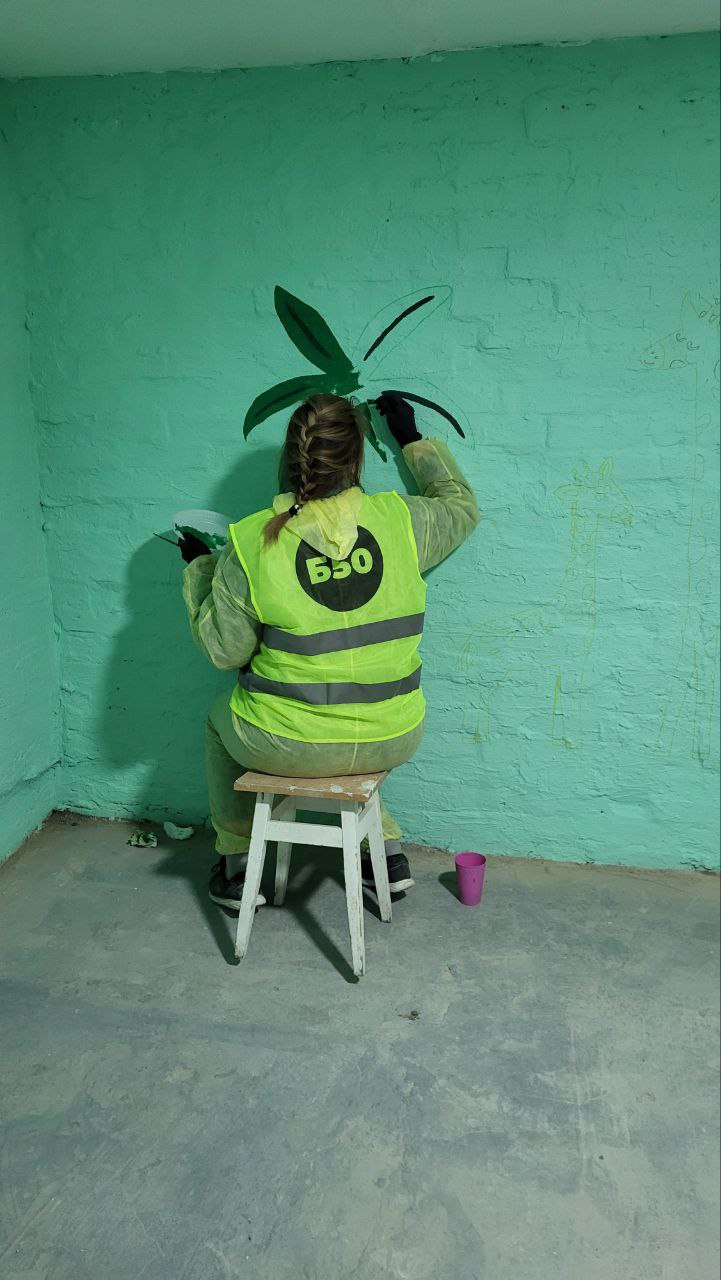An article by the Japanese magazine Asahi about the work of B50 volunteers in the bomb shelter of the Zavorychi Gymnasium
Recently, B50 volunteers from the Reconstruction and Shelters projects have completed the transformation of the Zavorychi Gymnasium bomb shelter. This is currently the largest such project for our community – B50 activists spent a total of 1300 hours (37 trips over 4 months) repairing and decorating four rooms for children (as well as corridors and technical rooms)! Of course, the result was worth it, because now 185 students of the gymnasium have a safe and comfortable space where they can not only wait out air raids, but also study, play, and socialize.

Journalists from different publications/channels/websites, as well as from different countries, have repeatedly written articles/filmed stories about the work of B50 volunteers. The Zavorychi location was no exception. Thus, on the anniversary of russia’s full-scale invasion of Ukraine, journalists from the Japanese newspaper Asahi (“Morning Sun”) joined our activists.
The “Asahi” is a Japanese national newspaper, one of the country’s largest publications, published twice a day since 1879: in the morning and evening editions. 4000 employees create it and about 8 million people read the Morning Sun every day.

Asahi journalists visited Zavorychi on February 24 and caught the volunteers from the Shelters project at work. On that day, B50 artists Polina Koruts and Anna Sarnavska were working in the “Jungle” room: using a projector to apply designs to the walls and paint them.

Below is a translated article from the Morning Sun:
Since the beginning of the full-scale russian invasion, one in seven educational institutions in Ukraine has been damaged by air strikes or other means. For the safety of students, schools without bomb shelter cannot hold in-person classes.
On February 24, two years after the invasion began, we arrived in the village of Zavorychi, near Kyiv. We went down the stairs to the basement of the local gymnasium. The ceiling is low, and the air in the concrete-walled shelter is cold. In the largest room, there are 18 beds lined up close to each other, illuminated by the blue-white light of fluorescent lamps.
Will the children sleep here amid air alarms? What kind of dreams will they have?
Polina Koruts, 35, a manicure specialist from Kyiv, coordinates the creative process. On weekends, she visits schools and kindergartens in the Kyiv region to paint the walls of underground shelters. In this way, she hopes to support children in wartime and improve their mood.
The world needs color, and the war takes it away. Houses burned down by missile attacks. The sky is covered with white smoke. The roads are littered with rubble. People’s bodies have lost their color due to numbness. There are too many gray, dull, destroyed things in this country.
Using a projector, pre-prepared drawings appear on the walls. Dolphins, monkeys, rabbits, and giraffes are dancing. Volunteers draw sketches and paint them with colors.
Polina Koruts:
Blue, yellow, red, green. I use bright colors. I feel that they give children wings,” she said, smiling.
It was the fall of 2022 when I was asked to start painting shelters. The first was a kindergarten in Bucha (near Kyiv), where the massacre took place. I continued to paint, and this is my eighth school. Drawing gives me strength. I have made more friends.
When will victory and peace come? I have been dreaming about it for a long time. I hope that I will not have to fear the shadow of the enemy. I hope that we will live a free and peaceful life without fear of war.
Source: https://www.asahi.com/.



